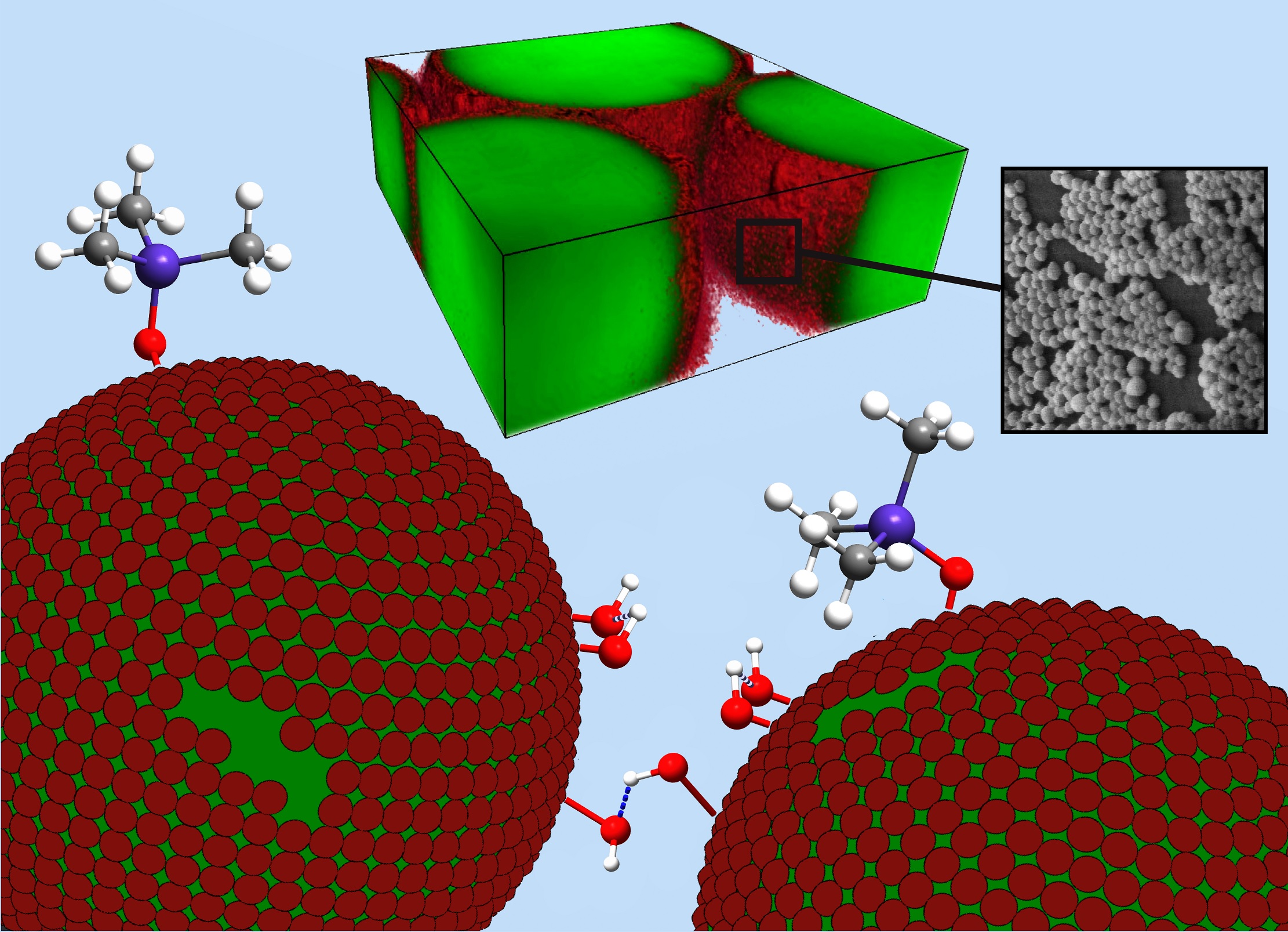Research
Nanoparticle Stabilized Emulsions

Emulsions consist of dispersions of one immiscible fluid in another, such as oil in water. In order to make these dispersions stable over time, stabilizers such as surfactants (classical type emulsions) or nanoparticles (Pickering type emulsions) are commonly added. These stabilizers can adsorb to the fluid-fluid interface to lower interfacial tension, and/or provide steric or electrstatic stabilization, so that droplets of one liquid remain dispersed in the other for long periods of time. Emulsions are widely used in industrial applications, including in food sciences, cosmetics, and enhanced oil recovery technologies. For these industries, an in depth understanding of the stability and rheological properties of the emulsions under both static and dynamic conditions is vital to their successful application. In our group, we combine rheology with microstructural analysis to understand the complex relationship between stabilizer choice, rheological behaviour, long term stability and flow stability. Of particular interest to our group is the study of nanoparticle stabilized emulsions and the impact of particle interactions on the final emulsion properties. For these studies, we employ rheological studies, confocal microscopy and photonic force microscopy, along with a number of other analytical and material science methods.
We are interested in the application of nanoparticle stabilized emulsions in EOR applications as well as bitumen transport. We combine micro coreflood experiments and the in-situ monitor multiphase flow by confocal laser scanning microscopy to deepen our understanding of the recovery mechanisms. The bitumen transport project resulted in the recent launch of a start-up company InnVTek Inc which was supported by the GreenSTEM government program.
Related Publications
- Brandy Kinkead, Rachel Malone, Geena Smith, Aseem Pandey, Milana Trifkovic, (2019).“Bicontinuous Intraphase Jammed Emulsion Gels: A New Soft Material Enabling Direct Isolation of Co-Continuous Hierarchial Porous Materials”. In: Chemistry of Materials. doi:10.1021/acs.chemmater.9b02398
- Derakhshandeh, Maziar et al. (2018). “Analysis of network formation and long-term stability in silica nanoparticle stabilized emulsions”. In: Soft Matter. issn: 17446848. doi:10.1039/c7sm02457f
- Jahandideh, Heidi et al. (2018). “The Significance of Graphene Oxide-PolyacrylamideInteractions on the Stability and Microstructure of Oil-in-Water Emulsions”. In:Langmuir. issn: 15205827. doi:10.1021/acs.langmuir.8b02288
- Pandey, Aseem, Maziar Derakhshandeh, et al. (2018). “Role of interparticle interactions on microstructural and rheological properties of cellulose nanocrystal stabilized emulsions”. In: Journal of Colloid and Interface Science. issn:10957103. doi:10.1016/j.jcis.2018.08.044
- Pilapil, Brandy K. et al. (2016). “Stabilization of Oil-in-Water Emulsions with Noninterfacially Adsorbed Particles”. In: Langmuir. issn: 15205827. doi:10.1021/acs.langmuir.6b00873
- Pandey, Aseem et al. (2018). “Cellulose Nanocrystal Stabilized Emulsions for Conformance Control and Fluid Diversion in Porous Media”. doi:10.2118/191609-ms